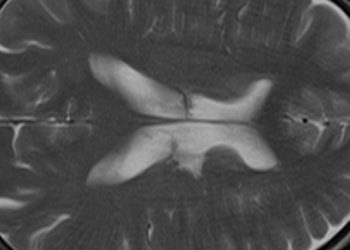C-section surgical techniques yield equivalent outcomes
Image: PD
1. Different c-section techniques (blunt vs. sharp entry, single-layer vs. double-layer closure, etc.) resulted in equivalent risk for short-term maternal and infant morbidity.
2. Compared to using polyglactin-910 (PG-910) sutures, the use of chromic catgut sutures for uterine repair was associated with lower likelihood of requiring >1 unit of blood.
Evidence Rating Level: 1 (Excellent)
Study Rundown: This study found that among five c-section dissection and suturing techniques, none demonstrated statistical superiority in reducing the incidence of a primary composite outcome for maternal and infant morbidity. However, women who received uterine closure with chromic catgut uterine sutures were less likely to receive >1 unit of blood in the post-partum period. These findings suggest surgeons could use the technique of their choosing without affecting short-term maternal and infant outcomes.
Strengths of this study include a prospective design within a large RCT, a diverse study population, and assessment of maternal and fetal outcomes through multiple measures. Limitations include variable compliance with treatment protocols and evaluation of short-term outcomes only (up to 6 weeks post-partum). Further studies should evaluate the impact of these c-section techniques on longer-term outcomes and might also assess the generalizability of these results in other countries.
Click to read the study in The Lancet
Relevant Reading: UpToDate: Cesarean delivery technique
Study Author, Professor Peter Brocklehurst, talks to 2 Minute Medicine: University College London, Director of the Institute for Women’s Health, Co-Director of the Policy Research Unit – Maternal Health and Care and Professor of Perinatal Epidemiology.
“The CORONIS trial is larger than all the existing trials added together and becomes the current evidence base for these interventions. The most surprising finding was that there were almost no differences in the outcomes we measured between any of the intervention pairs that we looked at. This reassures clinicians that their current practice appears to be safe and that though we still need to know the long-term implications of these different techniques, for the moment there is nothing to suggest one approach is clearly superior to another.
The only statistically significant finding was in the choice of suture material used to close the uterine incision and the outcome of blood transfusion. This, against expectations, favoured the use of chromic catgut when compared with polyglactin 910. The former material is no longer used in many developed countries, where it has been abandoned in favour of more modern and more expensive synthetic material, which has theoretical advantages. Either this is a spurious association, or it could be true – in which case it eloquently illustrates the difference between theoretical benefit and actual benefit.”
In-Depth [non-blinded, randomized controlled trial]: This trial, conducted from 2007 through 2010 compared five c-section techniques, 1) blunt vs. sharp abdominal entry; 2) exterior vs. intra-abdominal uterine repair; 3) single-layer vs. double-layer closure of the uterus; 4) closure vs. non-closure of the peritoneum; and 5) chromic catgut vs. polyglactin-910 (PG-910) uterine sutures, in 19 locations in 7 countries throughout South America and Africa. Each site was assigned to two techniques, and 15,935 pregnant women undergoing c-section were randomized to intervention pairs. Outcomes included a composite of maternal infection, maternal death, additional operations, maternal blood transfusion of more than 1 unit, pain interventions, stillbirth, infant morbidity and mortality, other maternal morbidity and health service utilization within 6 weeks of delivery.
Overall, no significant association was observed when comparing the incidence of composite outcome by any two surgical techniques. However, women receiving chromic catgut sutures were less likely than those receiving PG-910 sutures to require >1 unit blood transfused (RR 0.53, CI 0.30-0.93).
By Denise Pong and Leah Hawkins, M.D.
More from this author: Patient centeredness poor predictor of fertility care dropout, High BMI in early adulthood linked to reduced risk of endometriosis, Obtaining consent for c-section during labor may be suboptimal
© 2013 2minutemedicine.com. All rights reserved. No works may be reproduced without written consent from 2minutemedicine.com. Disclaimer: We present factual information directly from peer reviewed medical journals. No post should be construed as medical advice and is not intended as such by the authors or by 2minutemedicine.com. PLEASE SEE A HEALTHCARE PROVIDER IN YOUR AREA IF YOU SEEK MEDICAL ADVICE OF ANY SORT. Content is produced in accordance with fair use copyrights solely and strictly for the purpose of teaching, news and criticism. No benefit, monetary or otherwise, is realized by any participants or the owner of this domain.







